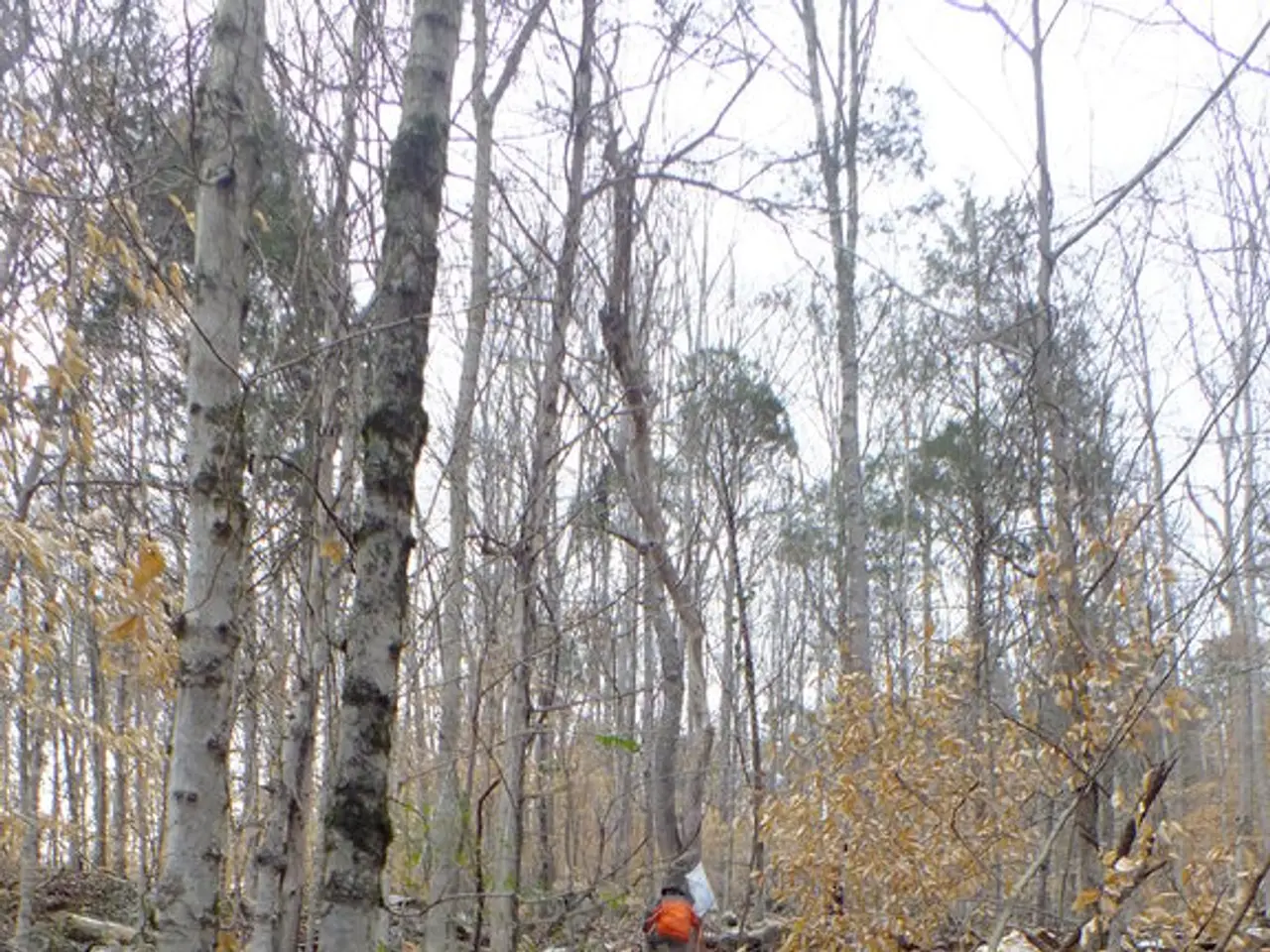Massive threat of Amazon rainforest degradation if worldwide temperature increase surpasses 1.5°C mark
=====================================================================
A new study, published in Nature Climate Change, has raised concerns about the impact of global warming on the Amazon and Siberian forests. The research, led by Dr David McKay from the University of Edinburgh, used a modelling framework to project the impacts of various emissions scenarios on forest health.
The study finds that surpassing the 1.5°C warming goal increases the likelihood of substantial degradation or loss of these forests. The Amazon and Siberian forests are particularly sensitive to climate warming due to their complex carbon and water cycles. Factors such as tree mortality rates, photosynthesis efficiency, wood density, and water availability in the Amazon are critical parameters affecting biomass and productivity under warming climates.
Across all simulations where global warming in 2100 surpasses 1.5°C, 37 per cent show "some amount of dieback". This risk increases further in the long term, with 55 per cent of simulations exhibiting dieback by 2300. Most Amazon dieback scenarios happen in hot, dry conditions, according to the study.
The study identifies future temperature and rainfall conditions that result in net forest "dieback", specifically in the Amazon. The authors assess forest health using two metrics: net primary productivity and forest cover.
The research considers three illustrative mitigation pathways: renewables, negative emissions, and gradual strengthening. The average outcome of the renewables scenario keeps warming below 1.5°C by 2100, while the average outcome of the gradual strengthening pathway sees global average temperatures reach 1.8°C by 2100. The average outcome of the negative emissions pathway sees warming initially overshoot the 1.5°C threshold, but extensive use of carbon removal brings warming back below 1.5°C before 2100.
However, the study doesn't show how regional tipping points could potentially further amplify and lock-in these future forest shifts, even with negative emissions. Dr David Lapola, a researcher at the University of Campinas in Brazil, warns that vegetation models provide a poor representation of how CO2 may affect these forests directly and that scientists must collect field data to make any new advancement with models.
Despite these limitations, the study underscores the urgency of limiting warming to safeguard these critical ecosystems. The maps show that "large areas of both Amazonian and Siberian forest show reduced net primary productivity" by 2100 due to overshoot, compared to a scenario with no overshoot. The findings show that "we can't afford complacency".
The study highlights that overshooting 1.5°C leaves forest ecosystems "exposed to more risk than [they] need to be". Improved region-specific modeling of forest carbon dynamics enhances understanding but reinforces the urgent need to limit warming to safeguard these critical ecosystems. The greatest uncertainty in this study comes from the spread of climate sensitivities, which means that small but significant risks of short- and long-term forest ecosystem impacts exist, even under low emissions scenarios.
References
- McKay, D., et al. (2022). Climate-driven risks of Amazon and Siberian forest dieback under 1.5°C warming. Nature Climate Change.
- Lapola, D., et al. (2021). Amazon forest carbon dynamics: A review of current knowledge and future challenges. Global Change Biology.
- Scheffer, M., et al. (2009). Early warnings of regime shifts in ecosystems: A review and synthesis of the warnings framework. Ecosystems.
- The Amazon and Siberian forests are at risk due to climate change, as a study in Nature Climate Change revealed.
- The study warns that surpassing the 1.5°C warming goal increases the likelihood of substantial forest degradation or loss in these regions.
- The research suggests that biodiversity, specifically in the Amazon, could suffer significantly as a result of climate change.
- To safeguard these critical ecosystems, the study emphasizes the importance of energy transition towards renewable energy sources.
- Neglecting the impact of deforestation and carbon emissions on climate change can lead to health-and-wellness issues and climate-change-related medical-conditions in the long term.
- The study underscores the need for ongoing scientific research and environmental-science efforts to better understand and mitigate the risks of climate change on forest ecosystems.








